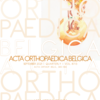Dynesys® dynamic stabilization outcomes in degenerative spine surgery
Dynesys; degenerative spine; adjacent disease; dynamic stabilization; lumbar fusion
Published online: Feb 16 2022
Abstract
Dynesys® is a dynamic device used for posterior stabilization of the lumbar spine. The objective of this study was to analyze the clinical and radiological outcomes at a 2-year minimum follow-up.
In this retrospective study, patients operated between 2009 and 2016 with Dynesys® stabilization were in- cluded. 5 different etiologies were included: disc herniation, lumbar stenosis, revision for adjacent seg- ment disease (ASD), spondylolisthesis, and scoliosis. Clinical and radiological evaluations were performed. Postoperative complications and revisions were recorded.
136 patients were included: 34 for lumbar spinal stenosis, 19 for disc herniation, 29 degenerative spon- dylolisthesis, 41 revisions for ASD, and 13 scoliosis. Mean age was 64.8. Average clinical follow-up was 46 months. Postoperative clinical results showed a mean lumbar VAS of 3.07, a mean radicular VAS of 3.01 and an ODI score of 31.8%. The ASD rate was 16.2%, and overall revision rate was 11.8%. 2 cases (1.5%) of screw loosening were identified. Clinical outcomes, ASD rate and revision rate were more favorable in the spondylolisthesis and disc herniation groups.
This study has one of the largest Dynesys® cohort in literature. Spinal dynamic stabilization by Dynesys® presents good long-term clinical and radiological out- comes with a lower rate of complications than pre- viously published cohorts and lumbar fusions. Best indications seem to be degenerative spondylolisthesis.
